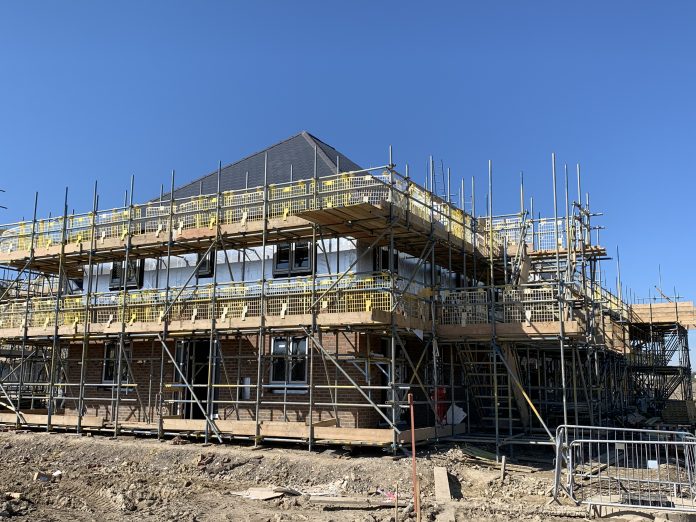Kevin Blunden, technical & compliance director at Harwood Building Control, explores how housebuilders can prepare for the 2025 Future Homes Standard
The recent pandemic has reignited the public’s interest in protecting the environment as they appreciated the green spaces around them and saw how quickly nature recovered during lockdowns. But when presented with the price of the necessary environmental changes, are customers willing to pay the extra costs, especially those involved in building more eco-friendly buildings?
This seems to be a choice that will be taken away from new home buyers and housebuilders as the proposals made in the government’s 2019 consultation on The Future Homes Standard – changes to Part L (conservation of fuel and power) and Part F (ventilation) of the Building Regulations – take effect.
Delivering zero-carbon ready homes
Their plan is that by 2025, the Future Homes Standard will deliver homes that are zero-carbon ready. This effectively means all new homes will be highly energy efficient and without fossil fuel heating systems. It extends to the provision of adequate ventilation through changes to Part F, to align with the more airtight construction encouraged by Part L of the building regulations. The aim is that no further energy efficiency retrofit work will be necessary to enable new houses to become zero-carbon as the electricity grid will continue to decarbonise.
The full technical specification has been accelerated with consultation due in 2023, legislation in 2024 and implementation in 2025. Ahead of that, the government has indicated that an interim uplift in Part L standards will be published around October 2021 to encourage houses to be future-proofed and move the industry towards their wider objective. Ultimately, a low carbon heating system will be integral to the specification of the Future Homes Standard and it is expected that heat pumps will become the primary heating technology for new homes.
It is perhaps not surprising that the government has taken this approach. For the past 20 years, the strategy for the development of Energy Performance Standards under Part L of the Building Regulations has adopted an approach of an incremental improvement in previous standards and a gradual reduction in CO2 emissions. This has seen many new properties being completed today based upon standards introduced over a decade ago and using them as the baseline for their performance. The desire to improve buildings and reduce environmental impact has always been balanced with what can be achieved by the sector in terms of materials and construction methods.
Over that same timeframe, the public’s expectations have changed and our understanding of the environmental impact of housebuilding has increased. However, the materials used, how they are manufactured, and the construction methods applied in volume housebuilding have not kept pace. This is further exacerbated by the fact that houses built over the last century will be resided in for many years to come and will not significantly contribute to the UK’s target of bringing all greenhouse gas emissions to net zero by 2050.
To overcome this issue and ensure as many homes as possible are being built in line with the new energy efficiency standards, transitional arrangements will now apply to individual homes rather than an entire development.
The transitional period is expected to be just one year. This will see the next changes to Part L introduce the requirement that it will be the date on which work starts on a new building which determines the standards which apply. This is as opposed to the current position where it is the date on which the application was submitted, or that when work started on other plots on a development, which drives the applicable standards.
Applying the ‘stick’ of legislative change
The government may have felt that the construction industry was not moving quickly enough towards implementing higher environmental standards and were simply content in achieving compliance with the historic minimum standards. Their appetite for industries to make a marked environmental change should not be underestimated, with the automotive industry being told that sales of new petrol and diesel cars will end by 2030.
By applying the ‘stick’ of legislative change the government hopes to instigate considerable improvements in building specifications, skills and supply chains which will stimulate innovation and learning in the sector. Ultimately this should drive significant change, and a shift in culture in the construction sector in respect of environmental issues of a similar scale to that which we are currently seeing in respect of the consideration of fire safety. This will provide the foundations for introducing a world-leading performance standard incorporating low-carbon heat in new homes by 2025.
With a greater emphasis on specifications which are better than the minimum standards, together with a larger focus on the performance of materials and standards of workmanship, this should deliver an improved outcome for the environment and new house buyers. The challenge will be in communicating the benefits of these changes to customers to ensure that they value the improvements and can appreciate the longer-term savings. This will be particularly difficult when comparing the price of new houses against older building stock, with many customers paying little attention to the Energy Performance Certificate rating.
Ultimately the ‘carrot’ is better than the ‘stick’ and as an industry we should look to embrace these legislative changes and build a position where customers not only desire new eco-friendly homes, but recognise the value and are prepared to pay the premium.
At Harwood, we are here to advise and assist you in your preparations for the 2025 Future Home Standards, as well as navigate the current and any upcoming changes.
Kevin Blunden
Technical & compliance director
+44 (0)1227 931 777












![[Video] Fireco: 80 new fire doors required for residential flats in London](https://www.pbctoday.co.uk/news/wp-content/uploads/2025/04/2024-06-01-Lords-view-one_1200x750_004-218x150.webp)

